Mahere Whānui | 2024-2034 Long Term Plan
Kia whai ngako te mahere | Making a plan matters
Between 2 April and 2 May 2024, we sought your feedback on five specific topics, with more than 1500 submissions across each proposal being received.
During May 2024, our elected members heard from those submitters who indicated they wanted to present their feedback in person, and then made decisions taking into account all submissions.
Our councillors then made their final decision on the work we will focus on over the next 10 years and how it will be paid for.
The opportunity to provide feedback closed on 2 May 2024. The 2024-2034 Long Term Plan was adopted on 27 June 2024.
Kia whai ngako te mahere | Making a plan matters
Between 2 April and 2 May 2024, we sought your feedback on five specific topics, with more than 1500 submissions across each proposal being received.
During May 2024, our elected members heard from those submitters who indicated they wanted to present their feedback in person, and then made decisions taking into account all submissions.
Our councillors then made their final decision on the work we will focus on over the next 10 years and how it will be paid for.
The opportunity to provide feedback closed on 2 May 2024. The 2024-2034 Long Term Plan was adopted on 27 June 2024.
-
Here's what our councillors decided
Share Here's what our councillors decided on Facebook Share Here's what our councillors decided on Twitter Share Here's what our councillors decided on Linkedin Email Here's what our councillors decided linkWe’re making the mighty Waikato even better, with you.
Following public consultation on our 2024-2034 Long Term Plan, councillors reviewed all 1500-plus submissions - and heard directly from those that wanted to present in person - before arriving at their final decisions in late May 2024.
Increasing our natural heritage rate
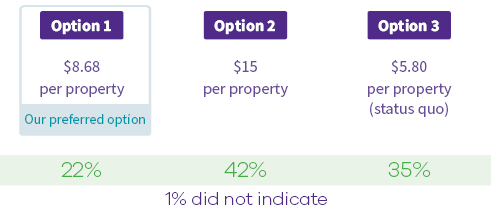
What we heard
Protecting and restoring biodiversity is an investment in our future. We can’t live without it and our economy depends on it. But funds we established to support conservation projects in our region hadn’t kept pace with demand or the rate of inflation, so we proposed an increase in the per property natural heritage rate.
The 35 per cent of submitters who wanted to keep the rate at $5.80 per property felt an increase was unaffordable at this time, with some not seeing the benefit of the rate. However, 64 per cent supported an increase, saying the fund represented good value for money and recognising the importance of biodiversity restoration. Of those, the majority (42 per cent) were in favour of the increase to $15, which councillors supported after first considering – and ruling out – a staged increase to the investment in biodiversity.

Collecting a region-wide public transport rate
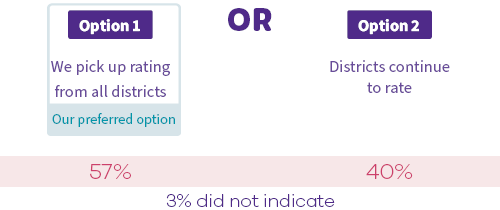
What we heard
Our public transport services provide access to education, employment, recreation, healthcare and more, while also helping to cut congestion and reduce carbon emissions. But the legacy funding arrangements that evolved over time were more complex than they needed to be, creating barriers to the comprehensive strategic planning we need to do to deliver consistent public transport region-wide, as well as administrative burdens resulting in unnecessary costs and delays to much-needed service improvements.
So, we proposed a regional rating for public transport.
Submitters agreed, with 57 per cent supporting our proposal to collect a region-wide rate. Based on this feedback, councillors decided to proceed with regional rating from 2025/26.
We also sought feedback on two possible rating models. While submitters indicated a preference for option 1, councillors decided against both. Instead, our staff will spend the coming months developing rating options in partnership with local councils. We’ll then consult with our communities on these options early in 2025, ahead of moving to regional rating.

Discontinuing the Regional Development Fund
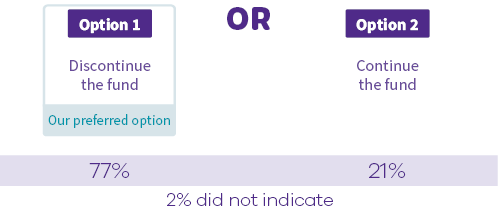
What we heard
The Regional Development Fund (RDF) was set up to enable investment in regionally significant projects with economic outcomes achieved in a way that also enhance the environment. It was undersubscribed, took staff time to administer and there was an opportunity cost to holding the fund in its current form. So, we proposed discontinuing the fund.
The majority of submitters supported our preferred option, saying the council should prioritise its funding to where it’s needed. Others felt the fund’s benefit to the community was unclear and that regional councils should not provide money for significant projects.
Those who supported the fund continuing said it was important for the council to support significant economic development opportunities, but that it could be used more effectively.
Councillors agreed, saying this would allow previously accumulated and unallocated funds totalling $3.979 million to be redirected to strategic priorities that could have a greater impact as economic enablers.

Funding for regional economic development agency Te Waka
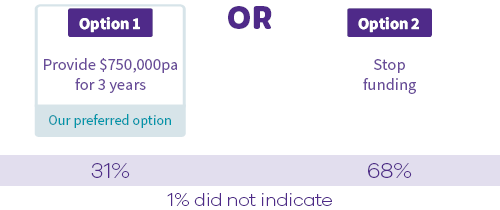
What we heard
We sought views on funding for the region’s economic development agency, Te Waka, proposing to use the unallocated money from the Regional Development Fund to pay for it.
A majority of submitters preferred we stop funding Te Waka, with a strong view that careful consideration needed to be given to where funds are spent in the current economic environment, and that the agency had not delivered tangible value for money. Those who supported continued funding felt there is a potentially valuable regional economic development function to be fulfilled, and often Te Waka is a good starting point to deliver this.
But, before we could make a decision, Te Waka announced it was shutting its doors on 30 June 2024. During deliberations, councillors agreed the Waikato needs a strong, collective voice on regional economic development.
They gave staff until September to report back on work with key stakeholders to develop the appropriate structure to support regional economic development. Residual RDF funds are available for regional economic development, subject to council approval.

Changes to the funding of primary industry compliance
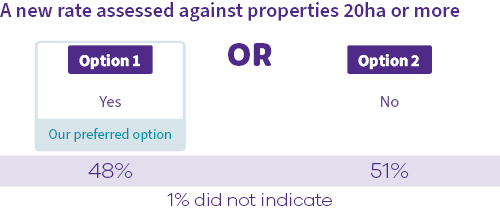
What we heard
We proposed a change to the way we fund our primary industry compliance activities that involved the removal of the existing permitted activity monitoring rate. In its place, we proposed a new primary industry compliance rate, with a new mix of general and targeted rates to be assessed against all properties 20 hectares or greater in area.
Submitters were split. Views were also varied, with some believing the cost should be spread across all ratepayers, and others telling us the targeted rate should only be applied to non-complying landowners. Some submitters felt current rates should be enough to cover costs.
Councillors decided to proceed with the new rate. In response to feedback, a remission of the new rate will be considered for the proportion of a property that is covered in bush. An application for remission will need to be made to the council.

Learn more and read the plan
What happened and when?
-
Consultation
Mahere Whānui | 2024-2034 Long Term Plan has finished this stage2 April-2 May
This was your time to tell us what you thought about our proposals. -
Hearings
Mahere Whānui | 2024-2034 Long Term Plan has finished this stage14-17 May
You could present your feedback to councillors in person (if you wished).
All meetings were open to the public. -
Decision making
Mahere Whānui | 2024-2034 Long Term Plan has finished this stage24-29 May
Councillors made decisions, taking into account your feedback along with other submissions from across the region. -
Final decision
Mahere Whānui | 2024-2034 Long Term Plan is currently at this stage25 June
The 2024-2034 Long Term Plan was adopted by council.
